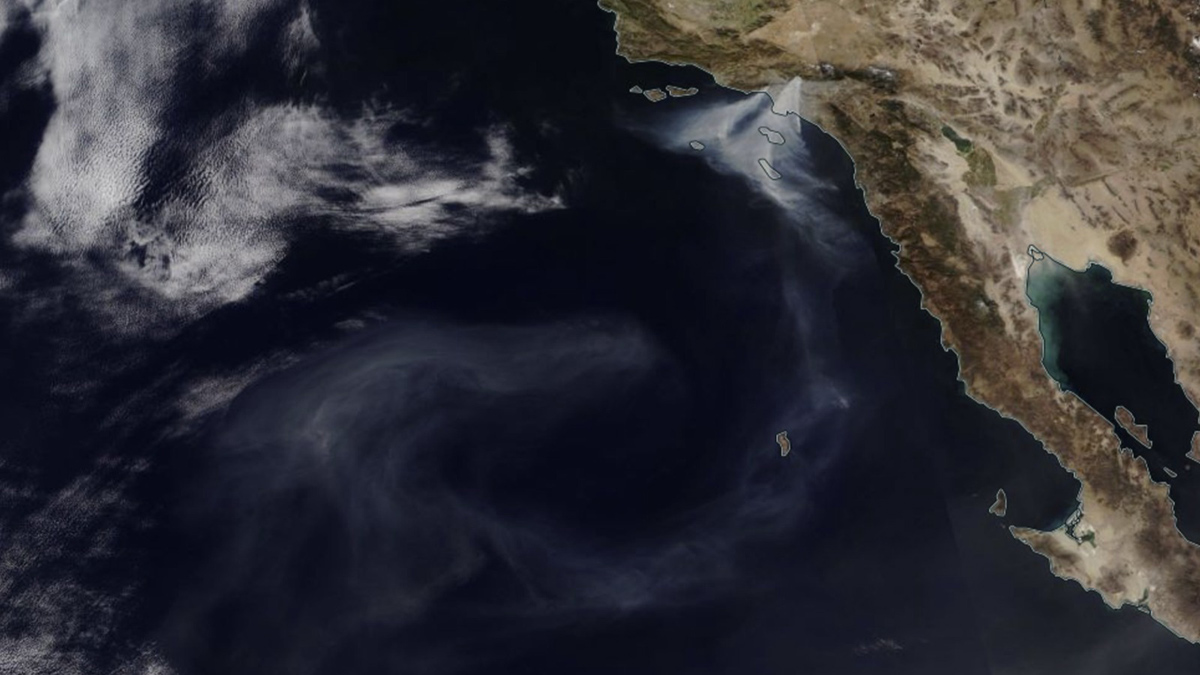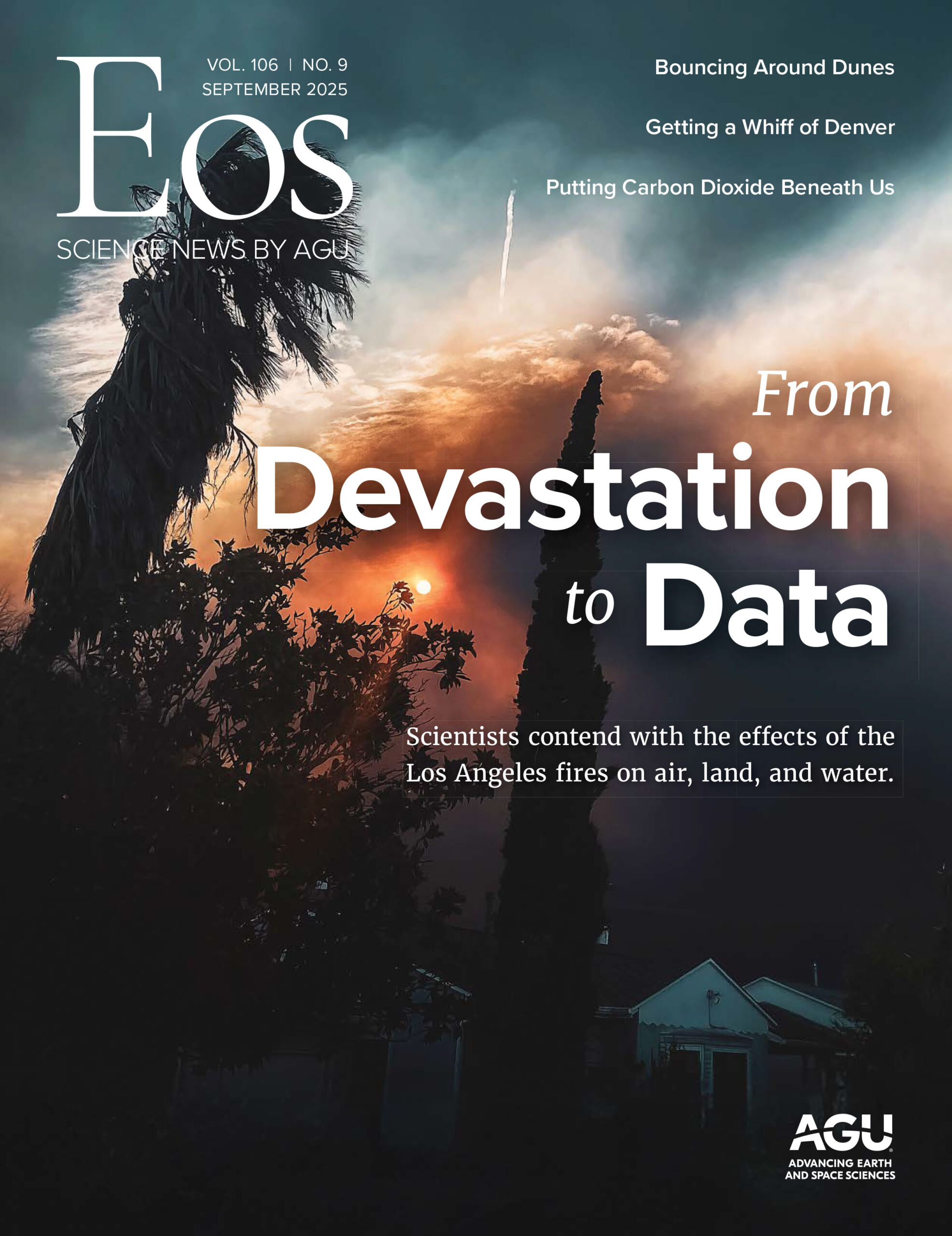As multiple fires raged through Los Angeles in January 2025, Bernadeth Tolentino had one more thing to worry about: kelp.
Tolentino, a marine biologist and graduate student at the University of Southern California, is part of a lab that runs a gene bank of kelp spores. The repository preserves genetic diversity and allows scientists to bolster struggling populations.
As the roaring fires turned homes, cars, and businesses into chemical-laden ash, Tolentino realized that runoff from postfire rains would eventually carry that ash to the sea.
In the ocean, the ash threatened to block sunlight and pollute the water surrounding one particular kelp population in Santa Monica Bay—a population not represented in the gene bank. She needed to reach the kelp before runoff damaged viable spores.
The dive team, including Tolentino, scrambled to apply for permits, gather their equipment, and coordinate dives before rainstorms carried too much toxic runoff to the site. “It was a little bit of a rush job,” she said. Accelerated permitting from the California Department of Fish and Wildlife allowed the team to reach the kelp population just in time.
They dove four times, collecting spores from southern sea palm, feather boa, and golden kombu kelp, which may be used to restore regional ecosystems in the future.
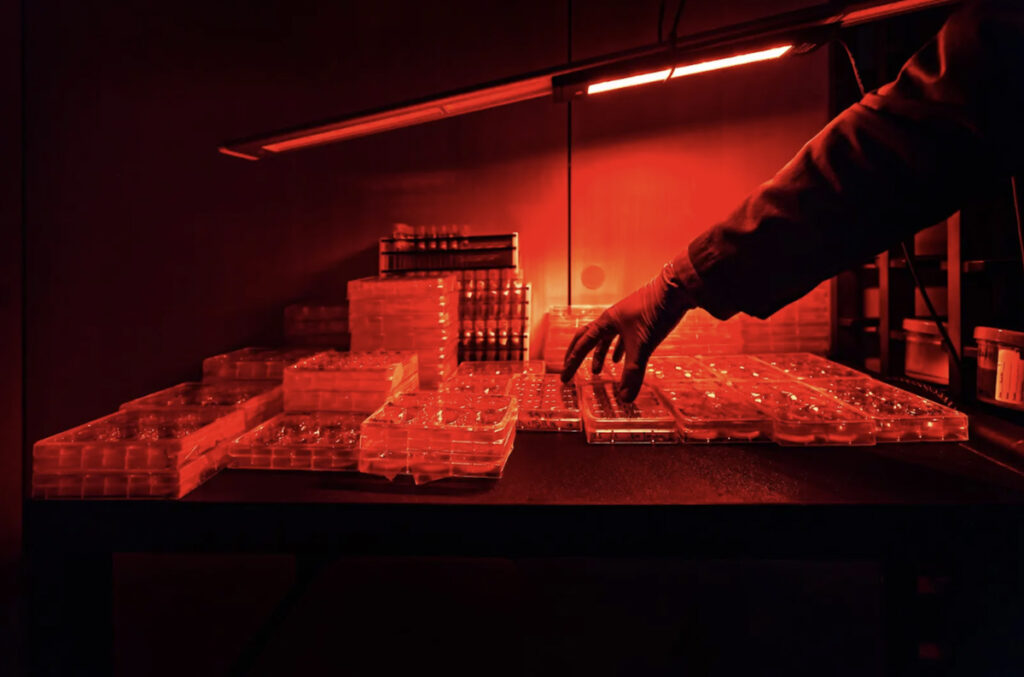
Tolentino was one of many water quality and marine scientists who collected valuable, time-sensitive information after the LA fires. “It felt great to be able to apply what I know to jump on this really urgent matter,” she said.
Ash in the Water
On 8 January, a day after the Eaton Fire began, scientists from the California Cooperative Oceanic Fisheries Investigations (CalCOFI) were about 80 kilometers (50 miles) away on a routine monitoring cruise. CalCOFI has been monitoring the state’s coastal waters for more than 75 years, collecting oceanographic and ecological data.
But as the fires raged, scientists on the deck of the CalCOFI vessel—and their colleagues on land—recognized the unique opportunity posed by the disastrous event. Here was a chance to collect real-time data on the environmental impacts of an urban fire without needing to plan and launch a separate expedition. They pivoted, used a planned crew exchange to gather more equipment, and increased their sampling.
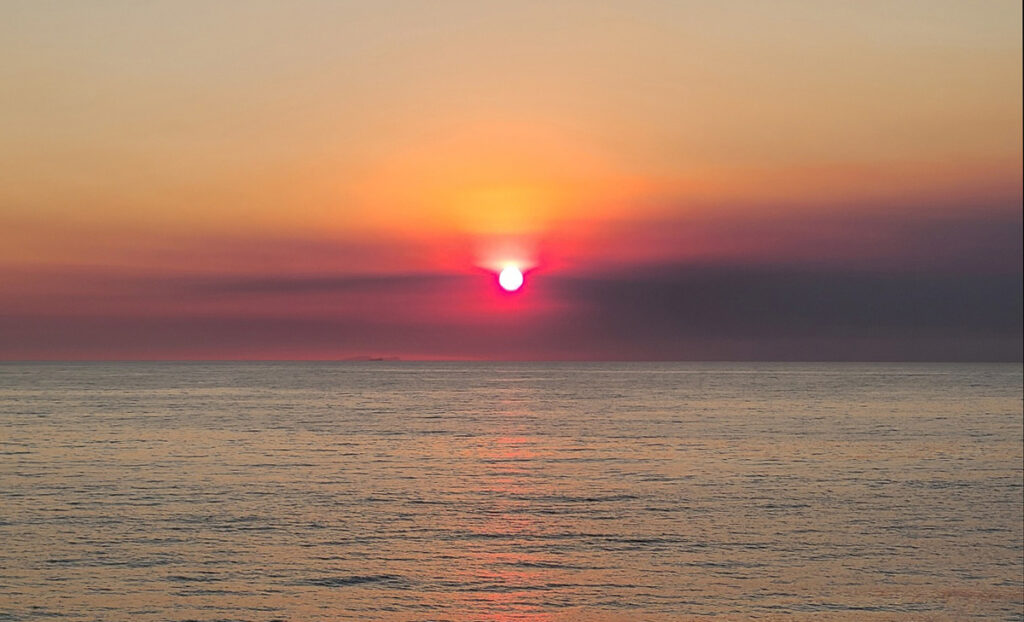
The event provided “a perfect opportunity to study the ocean impact of this very devastating urban fire,” said Julie Dinasquet, a marine microbiologist at the Scripps Institution of Oceanography, University of California, San Diego, who works closely with the CalCOFI team. Dinasquet was not on board the monitoring cruise but helped to coordinate the work during the fires.
Those on board were shocked at the effect the fires were having on the ocean, Dinasquet said. She and her colleagues had to wear masks and goggles when the smoke became too potent.
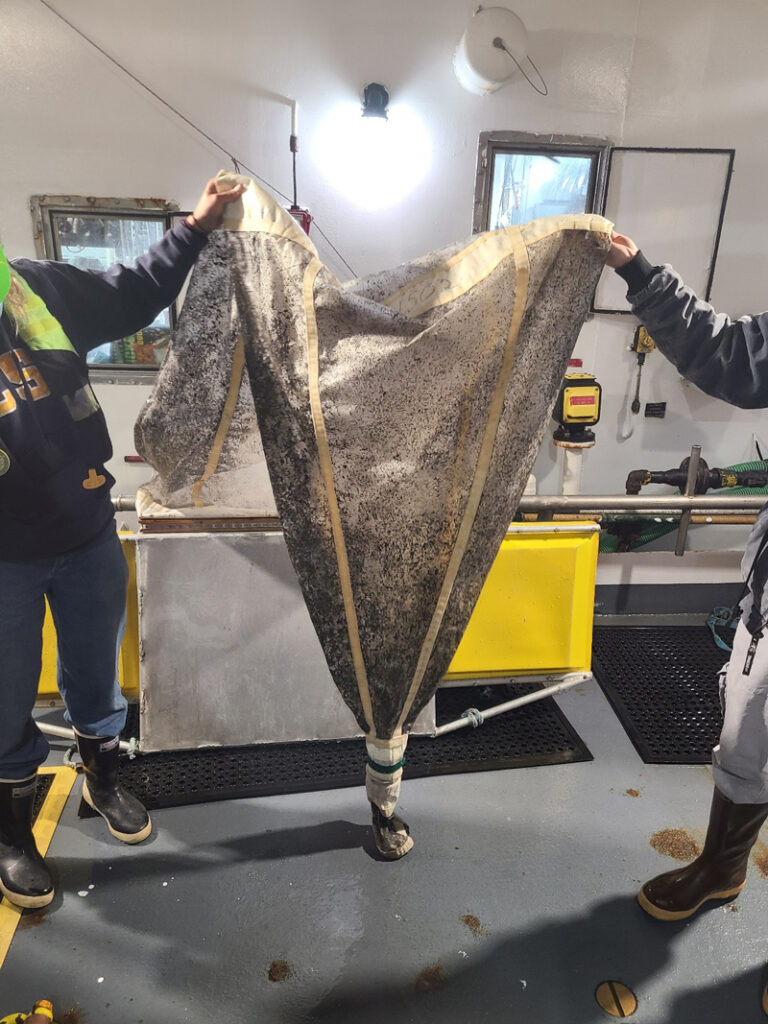
Some particles that landed on the water were big enough to see with the naked eye. The largest chunks the group measured were 5 centimeters wide—quite unusual given how far from the fires the samples were taken, said Douglas Hamilton, an Earth systems scientist at North Carolina State University who collaborates with the CalCOFI team.
Closer to shore, the onboard team pulled up a plankton net that was full of black ash. And water samples, typically filled with plankton, were filled instead with soot and debris.
Hamilton thinks that particles traveling from the primarily urban fires to the ocean contained more toxic material than those from blazes burning primarily biological fuels (such as brush).
Scientists know that falling ash and runoff from wildfires that burn mostly vegetation add nutrients to the ocean, sometimes spurring primary production and altering ocean biogeochemistry. The samples from the CalCOFI cruise will shed light on how urban fires can also affect ocean biogeochemistry—a rather new field, Hamilton said.
“This is really the first time this has been able to be observed.”
Ash from urban fires contains very different chemicals than ash from burned areas of less developed land, and therefore might have very different effects on the ocean. “We’re adding this extra layer of complexity,” Hamilton said. “How does this urban wildfire change the narrative of the way that we’ve been thinking about how wildfires might be impacting ocean ecosystems? This is really the first time this has been able to be observed.”
In April, a very large bloom of the toxic phytoplankton Pseudo-nitzschia unfolded along the California coast, killing sea lions and dolphins. Though the event is not unusual under La Niña conditions, scientists are questioning whether material that entered the ocean from the fires may have contributed to the bloom.
Dinasquet plans to analyze the composition of the ash and water samples collected on board the CalCOFI cruise and compare them with ash transported from fires in less developed areas. Hamilton will create models that could be used to project how future urban fires may affect the ocean.
The January fires were the first large coastal urban fires to have affected the ocean at such a scale. “This is an absolutely tragic event, but it’s the first of its kind,” Hamilton said. “So we need to learn from that.”
Rushing for Runoff
Fires’ effects on marine ecosystems don’t come from just the air: As rainwater percolates through burned neighborhoods, runoff carries pollutants through the watershed and into the ocean, too.
When rainstorms hit after the fires, Adit Ghosh was ready. More rainfall meant more runoff and a chance to collect samples that might shed light on how toxic metals such as lead, arsenic, iron, and vanadium, as well as organic pollutants, move through the watershed.
Ghosh, a geobiologist at the University of Southern California, and his colleagues monitored the forecast in the weeks after the fires. No matter the hour, when they expected rain, they headed out to four field sites to collect runoff.
The team especially wanted to sample runoff from the first storms to hit the area after the fires,as that water, they hypothesized, would contain the highest amounts of pollutants. During the first storm, which occurred in late January, the team stayed out until nearly midnight, filling bottles and vials with runoff. Since then, Ghosh has ventured out into rainstorms more than 2 dozen times, trying to capture runoff each time there’s enough flow to sample.
At one point during the sampling, a University of California, Los Angeles professor led the research team around a burned neighborhood in Mandeville Canyon. Ghosh did a double take at the remains of one of the houses—he’d seen it burn down, live, on television.
“You see it on TV, but when you walk up to it, you see the devastation,” he said. “It really hit home. It was really sad.”
Ghosh said he feels that as a member of the Los Angeles community, he has a responsibility to use his skill set to help area residents understand how the fires may be affecting their water.
“It’s important that we do this work, that we try to find these things out quickly and let the public know what we found.”
“It’s important that we do this work, that we try to find these things out quickly and let the public know what we found.”
As this article was written, the team had not finished analyzing all of the samples, but preliminary results show that lead and arsenic are elevated in runoff from burned urban areas, though not above EPA limits. Lead and arsenic may have been elevated in the area already, as they are regularly derived from several natural and urban sources.
Ghosh and his team want to collect streamflow samples from the unburned watersheds during next year’s winter storms to see how the contamination they’ve found compares with background levels.
Ghosh hopes that a full analysis of the data will help scientists and the public understand how chemicals in runoff differ between burned and unburned, and urban and less developed, areas. Ghosh and his collaborators also plan to create time series analyses for each of the pollutants they sampled to show how concentrations of pollutants in runoff change over time after a fire and over the course of multiple rainstorms.
“If there’s another fire somewhere, we can have a better understanding of how those [water quality] risks are going to linger after the event,” he said.
Spotting Plumes from Above
One public agency is helping coordinate much of the aquatic research. After the fires, the Southern California Coastal Water Research Project started to keep track of what samples scientists were collecting to reduce redundancies and help everyone involved know what data are available.
“We’re going to learn some great things from this.”
“We’re going to learn some great things from this,” said Michelle Gierach, an oceanographer at NASA’s Jet Propulsion Laboratory (JPL) working on ocean monitoring projects.
Gierach has been struck by that high level of collaboration in the postfire research. As just one example, she’s been in conversation with the CalCOFI team to determine whether their samples of ash-laden water can help her team at JPL validate satellite observations and derive new algorithms to assess the impact of future urban fires on the ocean. Her team at JPL is also working with colleagues at the University of California, Los Angeles and the University of California, Merced to assess the impacts of the fires on aquatic ecosystems.
“If our data can support the efforts of state agencies, municipalities, NGOs [nongovernmental organizations], academic groups, and others conducting fieldwork and analyses, and ultimately enhance understanding of urban wildfire impacts on nearshore and coastal aquatic environments, then sharing [them] is not only valuable—it’s essential,” Gierach wrote in an email.
She finds a “glimmer of hope” in seeing the scientific community rallying together so rapidly and coordinating so well. “It’s inspiring that in the face of this horror, something positive can happen.”
—Grace van Deelen (@gvd.bsky.social), Staff Writer
Kimberly M. S. Cartier also contributed to this reporting.

